As spring blossom enlivens our countryside, it calls to mind Van Gogh’s work in Provence, where he depicted its fleeting beauty. Just weeks after the trauma of having slashed his ear, he painted one of his most lyrical landscapes, Peach Trees in Blossom. This evocative image is at London’s Courtauld Gallery.
Vincent first mentioned working on the picture in a letter to his brother Theo in early April 1889: "Just now I have on the easel an orchard of peach trees beside a road with the Alpilles in the background.”
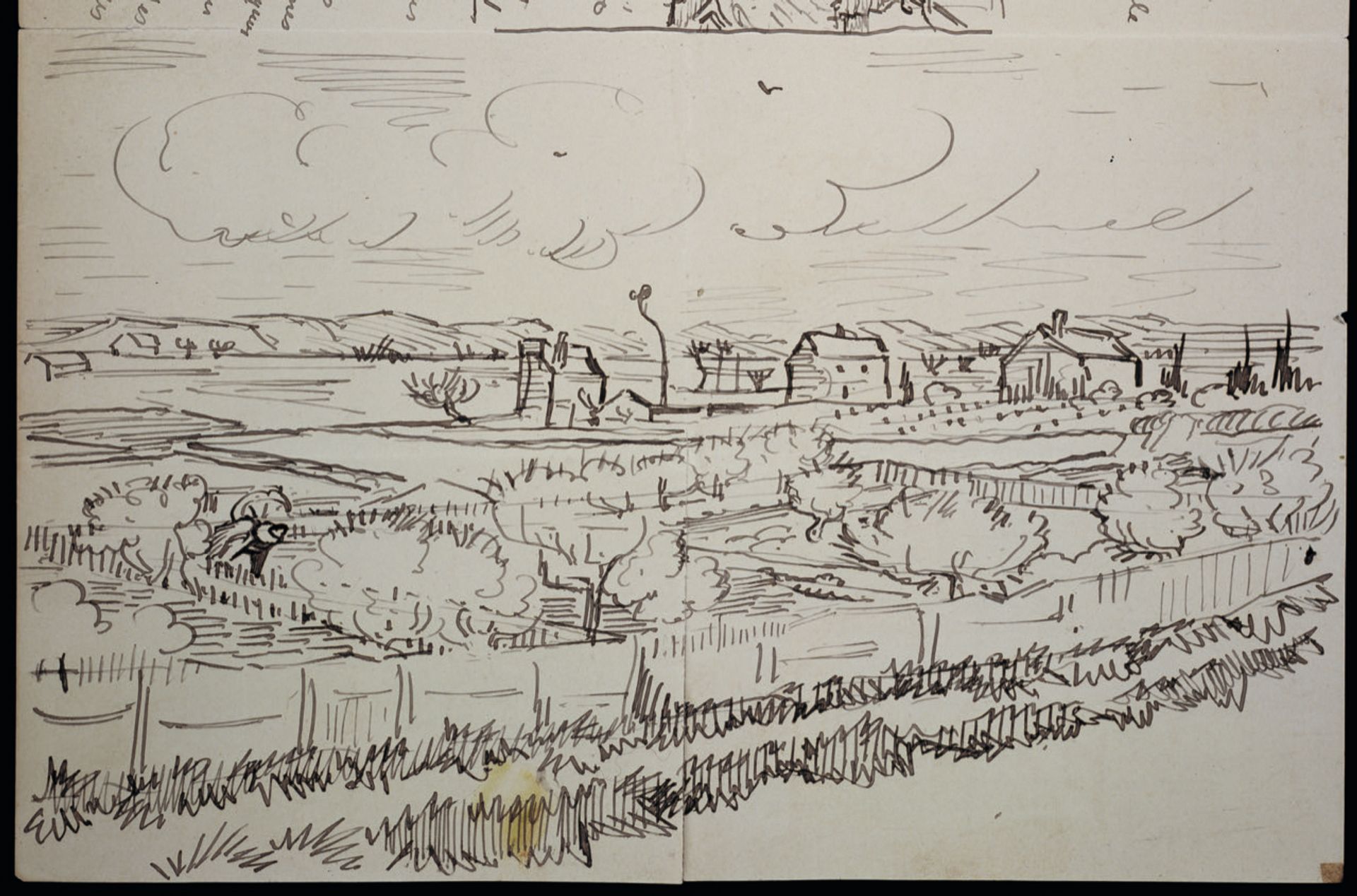
Van Gogh’s sketch of Peach Trees in Blossom, in a letter to Paul Signac, 10 April 1889. © Archives Signac, Paris
A week later he wrote to his artist friend Paul Signac, enclosing a sketch of the painting: “Green countryside with little cottages, blue line of the Alpilles, white and blue sky. The foreground, enclosures with reed hedges where little peach trees are in blossom—everything there is small, the gardens, the fields, the gardens, the trees, even those mountains, as in certain Japanese landscapes, that’s why this subject attracted me.”
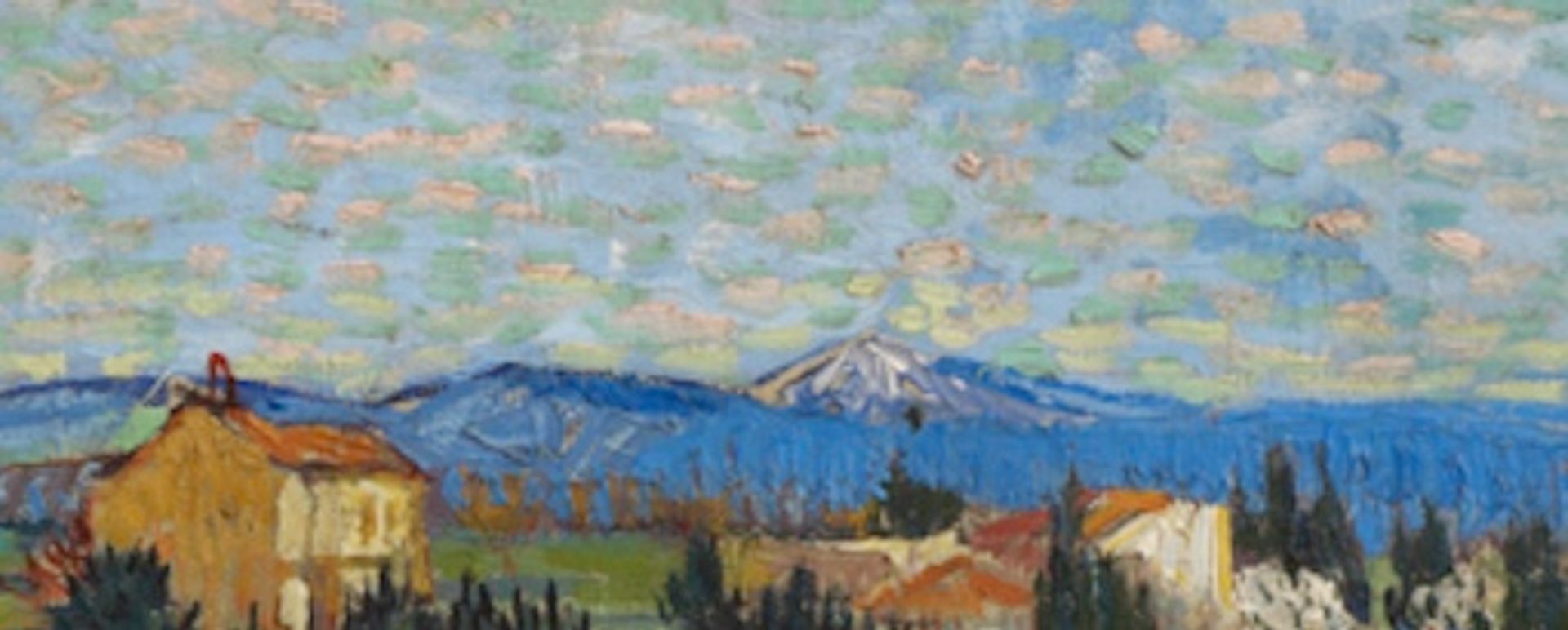
Detail of Van Gogh’s Peach Trees in Blossom, with the Alpilles. © Samuel Courtauld Trust, Courtauld Gallery, London
Peach Trees in Blossom was painted on the outskirts of Arles, by a track near several farms and with a distant view of the Alpilles (the little Alps). Along the ridge Van Gogh included a symmetrically shaped snow-capped mountain, which seems to echo the outline of the sacred peak of Mount Fuji—a frequent feature in Japanese landscape prints. A fine example is one with blossom in Utagawa Hiroshige’s series Thirty-six Views of Mount Fuji, a print which Van Gogh owned.
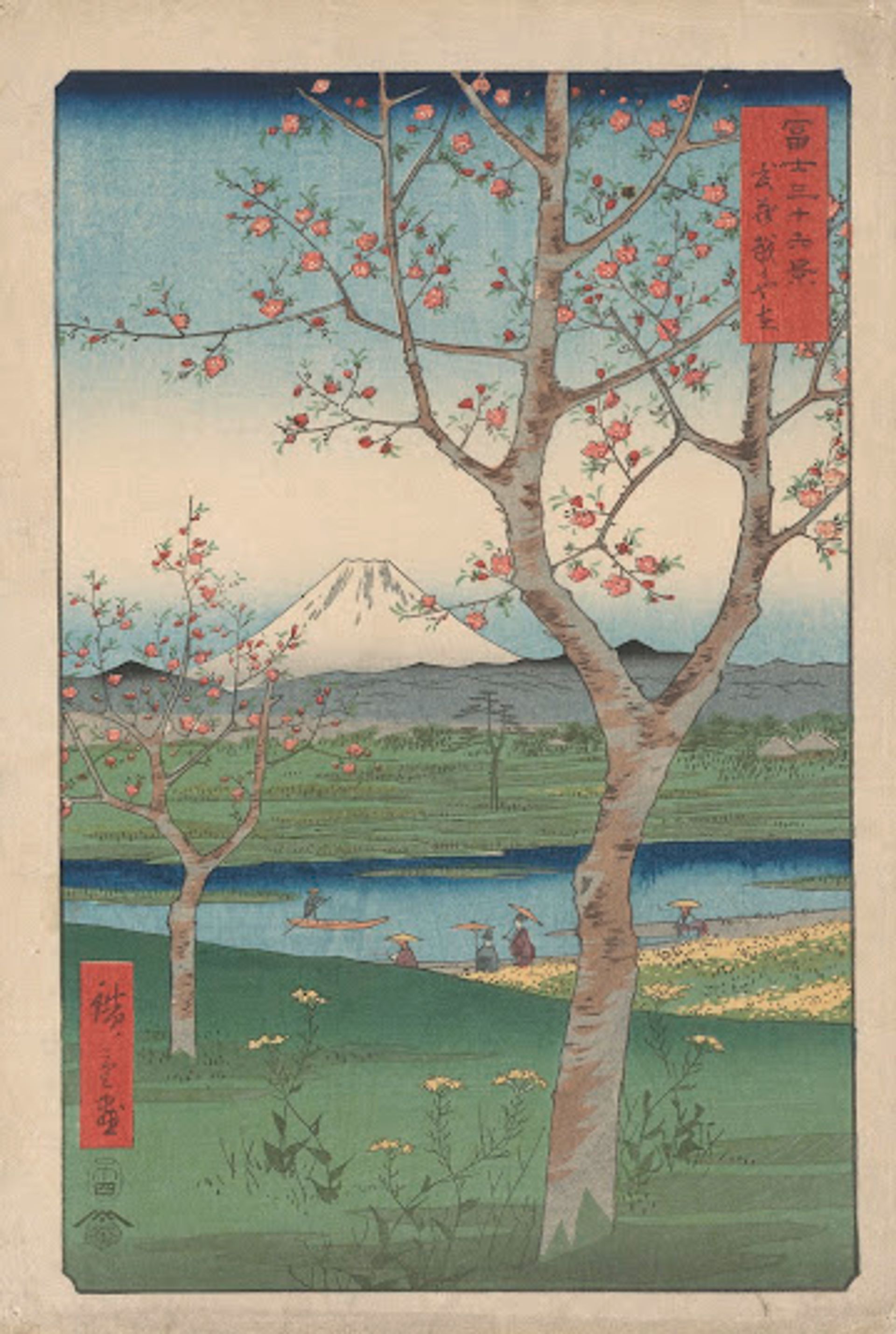
Utagawa Hiroshige’s The Outskirts of Koshigaya in Musashi Province (1858), from the series Thirty-six Views of Mount Fuji. © Van Gogh Museum, Amsterdam (Vincent van Gogh Foundation)
Van Gogh included another Japanese print in the background of his Self-portrait with Bandaged Ear (January 1889), which dates from just over two months before Peach Trees in Blossom. Slightly modifying the composition of the print, he has emphasised Mount Fuji as a prominent feature.
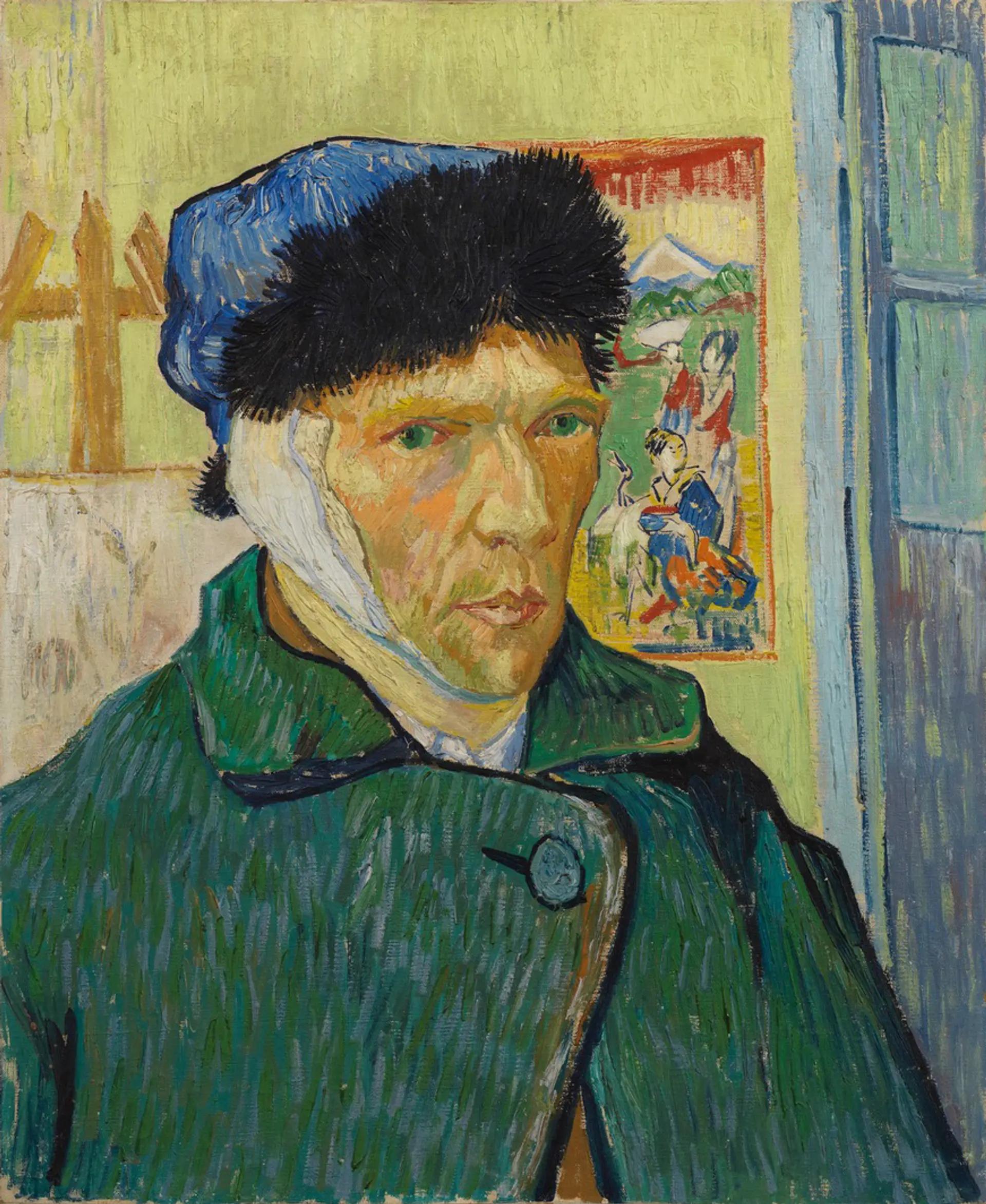
Van Gogh’s Self-portrait with Bandaged Ear (January 1889), which includes in the background his version of a Japanese print published by Sato Torakiyo, Geishas in a Landscape (1870s), with Mount Fuji. © Samuel Courtauld Trust, Courtauld Gallery, London
The Alpilles only rise to a height of 500m, so it would be most unusual for snow to fall in April, let alone remain unmelted on a sunny day. As Van Gogh hinted in his letter to Signac, the snowy peak represents a homage to Japan. He was also well aware of the Japanese love of blossoming trees when he set out to capture the Provençal scene.
Working quickly, with thick impasto paint, Van Gogh turned Peach Trees in Blossom into a landscape redolent of springtime freshness. Viewing this confident painting, it is difficult to comprehend that he was enduring a confused state of mind.
Van Gogh had suffered from three separate periods of mental instability since the mutilation of his ear on 23 December 1888. His fragile condition meant that he was still sleeping in the crowded men’s ward of the Arles hospital, although during April he was allowed out during the daytime to work. He had only limited access to his painting materials and personal possessions, which were in the Yellow House, at the other end of Arles.
Yet despite all these challenges, Van Gogh remained optimistic and was absolutely determined to press on. One can break an arm or leg and it will heal, Vincent wrote to his brother Theo, “but I didn’t know that one could break one’s brain and afterwards that got better too”.
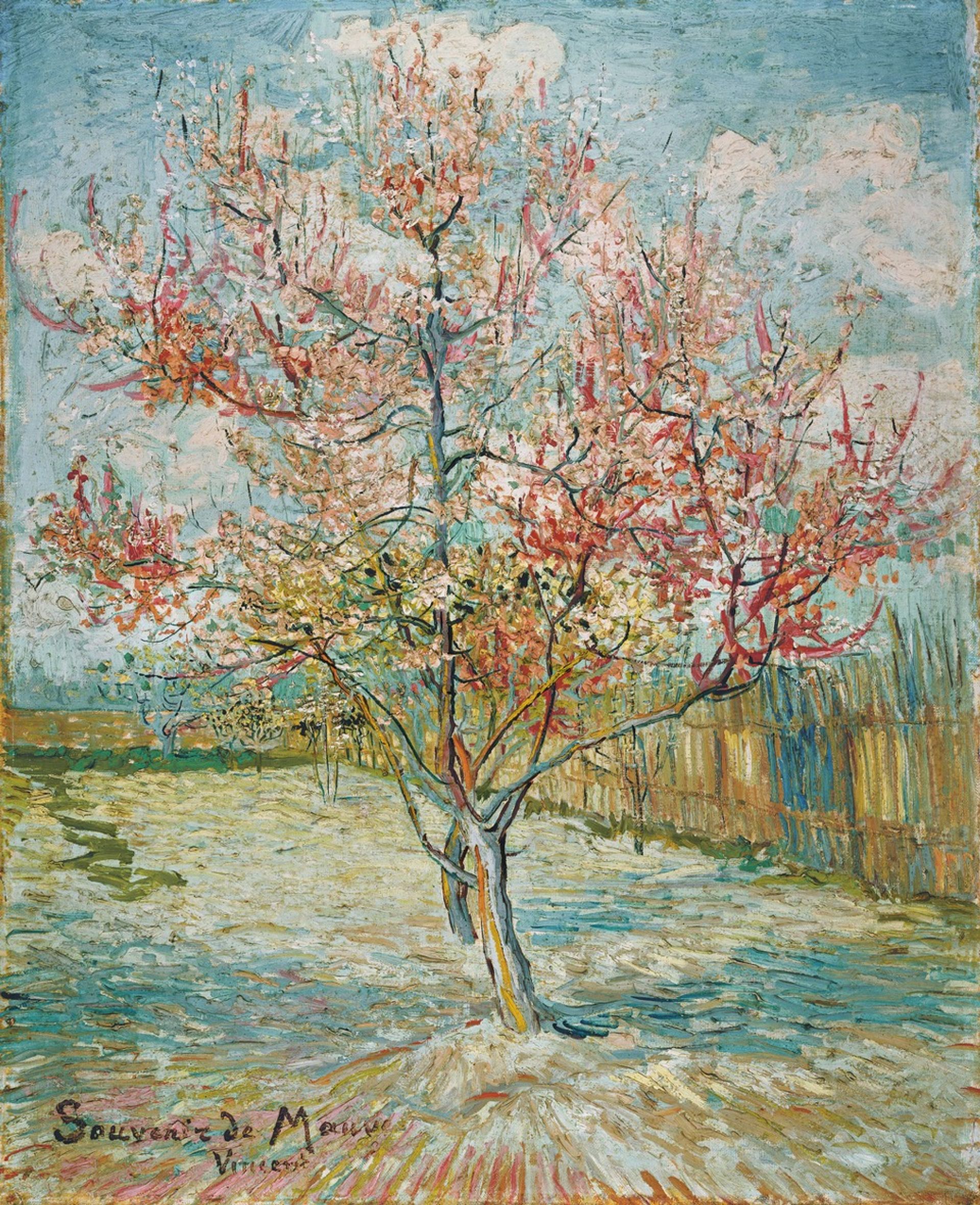
Van Gogh’s Pink Peach Trees (March-April 1888. © Kröller-Müller Museum, Otterlo
Springtime had always proved an inspiration for Van Gogh. A year earlier, he had painted a close-up of peach trees (one of the pair of trees is almost hidden behind the front one). Vincent described Pink Peach Trees to Theo: “Ploughed lilac field, a reed fence—two pink peach trees against a glorious blue and white sky. Probably the best landscape I’ve done.”
As for the 1889 Peach Trees in Blossom with the Alpilles, it was acquired by the only collector who is known to have bought one of Van Gogh’s paintings during his lifetime.
Anna Boch, a Belgian artist, had purchased The Red Vineyard in March 1890. A year later, after Van Gogh’s death, she paid 350 francs (then £14) for Peach Trees in Blossom. Her two Van Goghs were illustrated in one of the earliest books to feature the artist, by the German art historian Julius Meier-Graefe.
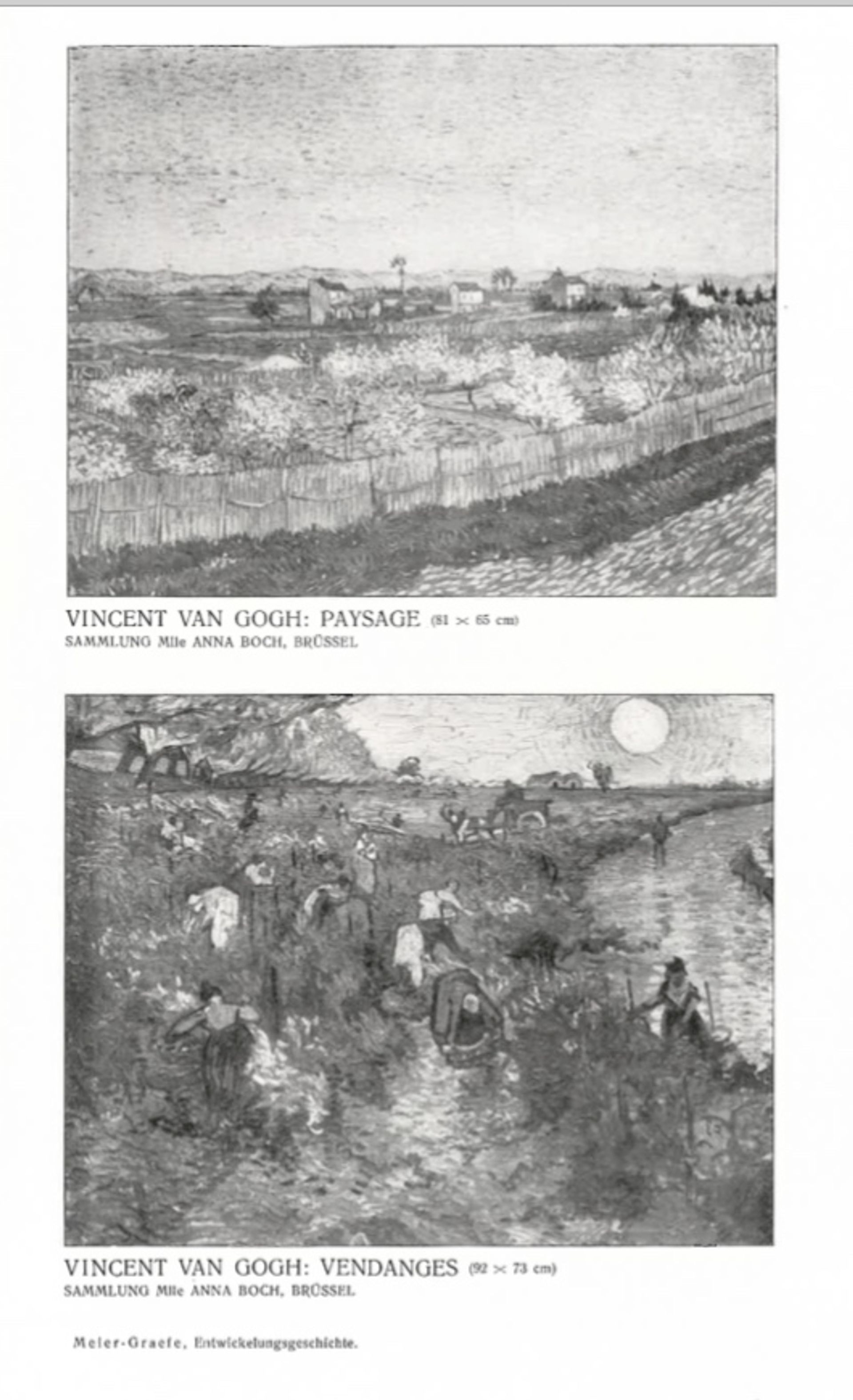
Julius Meier-Graefe’s illustration of Anna Boch’s two Van Goghs, Landscape (Peach Trees in Blossom) and Grape Harvest (The Red Vineyard). © Entwicklungsgeschichte der modernen Kunst, vol. iii, Stuttgart, 1904
Peach Trees in Blossom was bought in 1927 by the London textile manufacturer Samuel Courtauld, who paid £9,000. He hung the painting above the fireplace in the Etruscan Room of his impressive town house in London’s Portman Square.
In 1935 Peach Trees in Blossom was exhibited in a most unusual venue: the village hall in Silver End, in Essex. This was for a project known as “Art for the People”. As the organisers explained: “Most of the smaller towns of England have no art gallery and their inhabitants rarely have the opportunity to look at works of art.” It was therefore felt that great art should be brought from the cities to local areas.
In the very month that Peach Trees in Blossom was hanging in Silver End’s village hall, Courtauld took a drive through the English countryside. While enjoying the springtime scenery, he recalled his painting. As he wrote to his close friend Lady Aberconway: “The journey through Kent was lovely: the bright green grass & blossoming fruit trees & the newly washed sky & water glistening everywhere reminded me of the Van Gogh landscape”.
Now a highlight of the Courtauld Gallery’s collection, Peach Trees in Blossom has recently gone back on display in the newly refurbished Great Room —a magnificent setting for its Impressionist and Post-Impressionist masterpieces. Until 8 May it can be viewed along with the exhibition Van Gogh Self-Portraits.
Other Van Gogh news:
On 25 April Christie’s New York will be auctioning online a fragment of Biblical texts copied out by Van Gogh in the autumn of 1876, when he was a teacher in Isleworth, a village in west London. It starts with a line in English from Corinthians (“Though I speak with the tongues of men…”). Van Gogh originally wrote out six pages of various texts in an album for Annie Slade-Jones, with whom he was lodging.
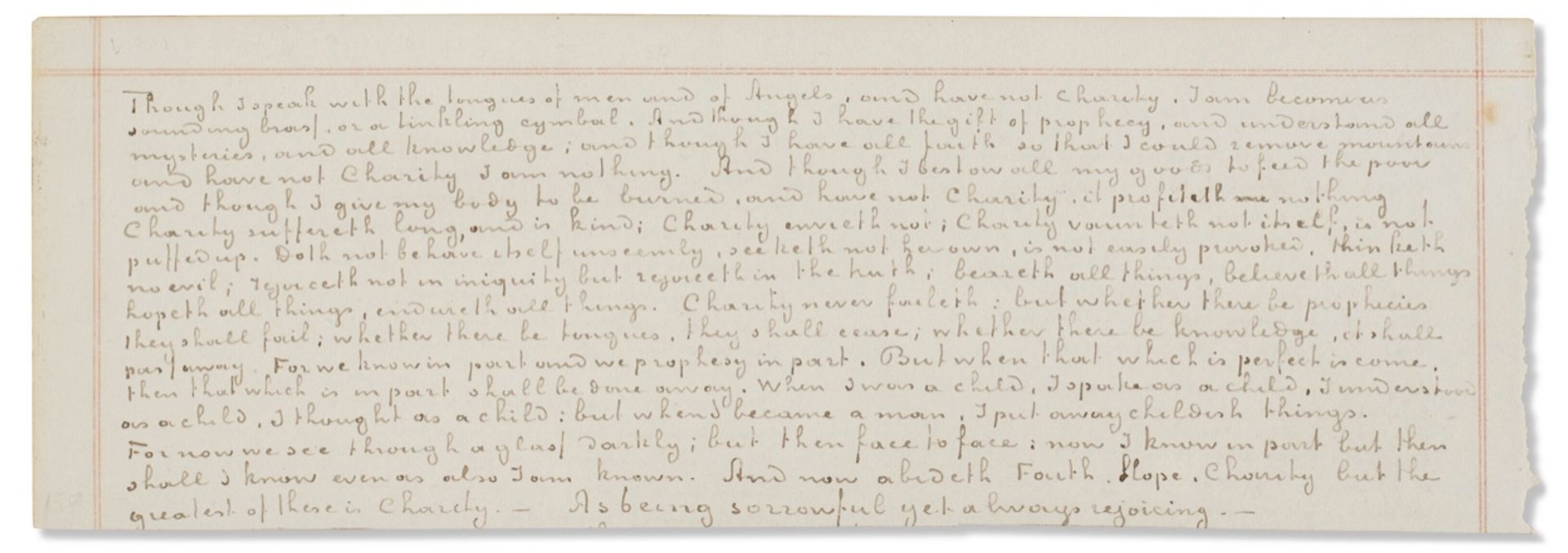
Biblical text, 1 Corinthians 13: 1-13, copied out in an album for Annie Slade-Jones, autumn 1876. © Christie’s
Sadly, the album was dismembered and the pages cut up into fragments in the 1980s. The piece now at Christie’s comes from the collection Maurice Sendak, the American writer and illustrator of children’s books, who died in 2012. Less than 3 inches high, the fragment of text is estimated at $15,000-$25,000.




